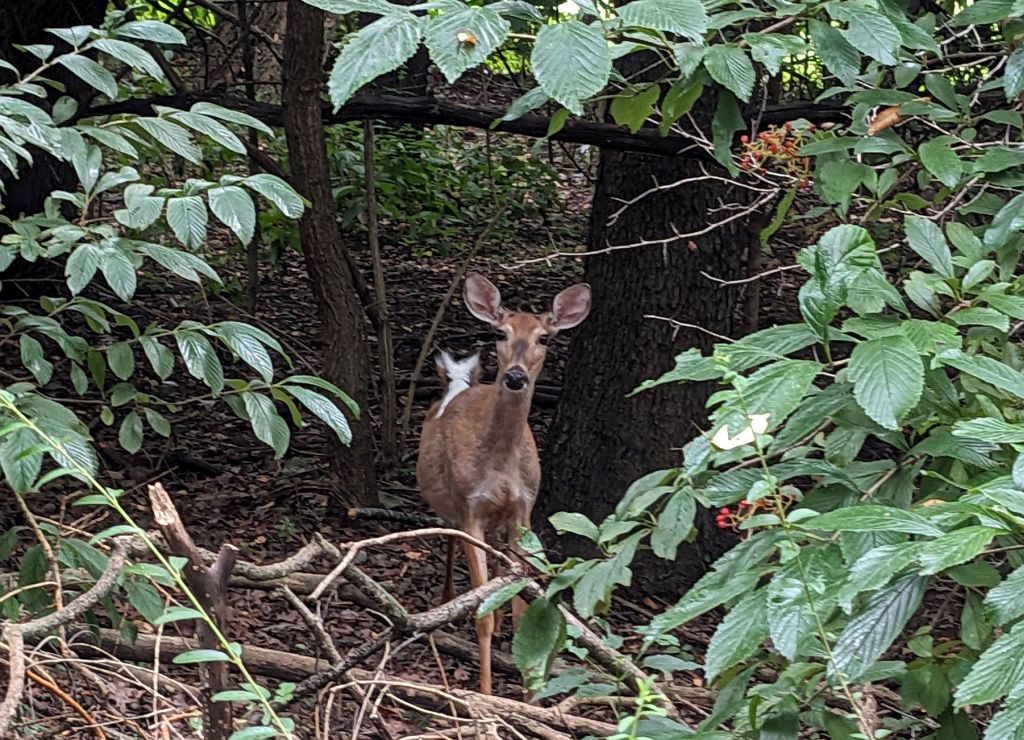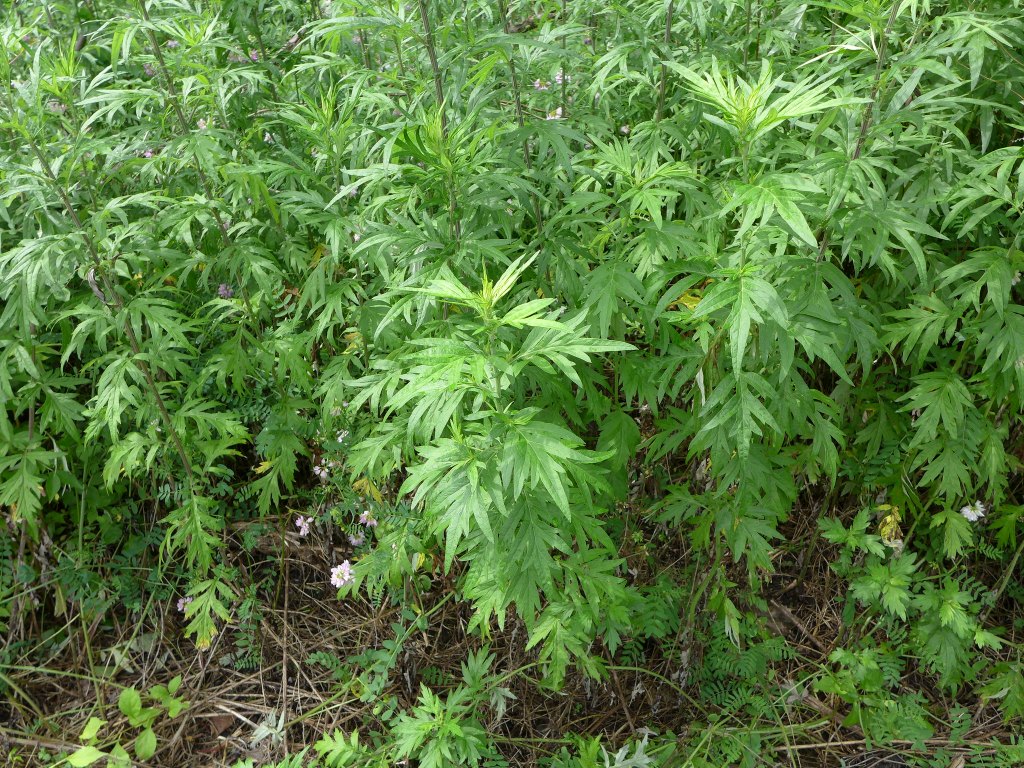
4 September 2024
Last weekend I noticed this group of tall plants in Schenley Park with a distinctly Christmas tree shape. They are certainly weeds and are thriving in an area where deer have eaten all the non-poisonous native plants. But they haven’t eaten these.
I took a closeup of the leaves and asked Picture This to identify it: Sweet wormwood (Artemisia annua), native to temperate Asia.

The Artemisia genus includes mugwort, wormwood, and sagebrush, all of which taste bitter and smell strong when their foliage or stems are crushed. Deer find this extremely unpalatable and can smell from far away that it’s too ugly to approach.

Some Artemisia plants also have medicinal properties. Sweet wormwood (A. annua) contains artemisinin which was discovered in 1972 and is used to treat malaria. Unfortunately the malarial parasite in Southeast Asia has developed artemisinin resistance so the drug can no longer be used alone to cure the disease.
Sweet wormwood’s close relative common mugwort (Artemisia vulgaris) also has a wide range of supposed pharmacological uses. These uses probably account for the plant’s presence in North America. The Pittsburgh area has plenty of it — another plant that deer don’t eat.

Sweet wormwood may be thriving this year because its mature plants are fairly drought resistant — and we are in a drought.

Drought and deer have combined this summer to flood Pittsburgh with so many weeds.